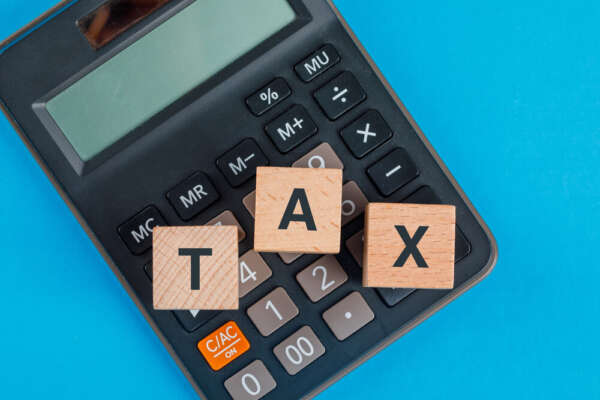In a recent media release, Australian Prime Minister Anthony Albanese unveiled his government’s plan to overhaul the country’s personal income tax system. The proposed changes aim to deliver “bigger tax cuts for middle Australia” while also making the system “fairer” overall.
The plan comes as many Australians face significant “cost-of-living pressures” in 2024. As the Albanese government stated, “Australians are under pressure right now and deserve a tax cut.” The administration believes the new cuts will “make a real difference” by allowing hard-working citizens to “keep more of the wages they earn.” While targeted at individuals, these changes could have flow-on effects for businesses.
Bigger Tax Cuts Targeted at Middle Australia
A core focus of the new tax plan is delivering a bigger tax cut to those on middle incomes compared to the previous government’s proposal.
The Albanese government stated: “Our tax cuts are good for middle Australia, good for women, good for helping with cost-of-living pressures, good for labour supply and good for the economy.”
Under the changes, a claimed 84% of taxpayers, or 11.5 million people, will receive a larger tax cut than they would have under the previous government’s plan. With middle income households facing significant budget pressures from high inflation and rising interest rates, the extra tax relief will provide meaningful help.
Under the proposed plans, even many on relatively high incomes are still better off. An individual earning $100,000 will receive a tax cut of $2,179, which is $804 higher than the earlier policy. As the administration highlighted, “a person earning $200,000 will still get a tax cut, which will be $4,529.”
By leaving Australians with more disposable income, consumer spending power receives a boost. This could translate into stronger sales for many businesses. With struggling consumers likely to spend tax savings rather than save them, the economy stands to benefit.

Rewarding Work and Boosting Labour Supply
A key aim with the new tax thresholds is to “increase the rewards for Australians who choose to work and earn more, boost labour supply.” For example, the tax bracket changes mean someone’s average tax rate is reduced as they earn above $45,000 or $135,000, incentivising greater workforce participation.
As independent economist Saul Eslake commented, this helps “return bracket creep,” where inflation pushes incomes into higher tax brackets.
For business owners facing hiring difficulties, this could expand the pool of willing workers over time. As wages and salaries rise with inflation, the adjusted tax brackets also avoid penalising middle income earners. Workers also gain stronger incentives to pursue training and development. This aids business efforts to upskill employees and boost productivity over time.
Good for Women and Lower Income Earners
In addition to middle Australia, the tax plan delivers a “fairer share of tax relief to women,” according to the government. Analysis shows 90% of female taxpayers, or 5.8 million women, will receive bigger cuts. Even those earning under $45,000 who were excluded from the previous policy will now get a tax reduction.
The tax cuts will put more money in the pockets of female and lower income workers. This expands the spending power of a large segment of the workforce, so businesses may see higher demand from new discretionary spending.
Responsible Fiscal Policy With Room for Future Reforms
While providing meaningful tax cuts, the Albanese government has stated the plan remains “fiscally responsible and doesn’t add to inflationary pressures.”
As the administration emphasised, the tax cuts form part of a broader economic agenda targeting inflation and the cost of living. Initiatives like cheaper energy bills, medicines, and childcare combine with the tax relief to ease pressures on households. For business owners, this can help maintain consumer confidence and demand across the economy.
Moreover, the tax bracket changes may allow room for future reforms to offset rising health and defence costs, such as alterations to the company tax rate. Such reforms could offset rising business costs in areas like wages and healthcare while supporting investment and competitiveness.
The Bottom Line
The Albanese government’s new tax cuts package seems on the face of it, a prudent approach in the current economic environment – however he has faced intense criticism from the Opposition, for “breaking election promises”.
Albo claims that by providing bigger tax relief for middle income earners facing high cost-of-living pressures, while retaining structural integrity, the plan helps those most in need while avoiding irresponsible additions to the deficit. For business owners, the flow-on economic effects may boost consumer spending power, labour force participation, and overall demand.
With widespread benefits for consumers and positive impacts for businesses, the tax changes form a key part of the government’s responsible economic plan to support Australians through a difficult period. Time will tell if these proposed changes get support in Parliament.
If you have questions on how the proposed tax changes could impact your business finances, our accounting experts at KeyPoint Accountants are here to help. Contact us at 07-5585-0600 or info@keypointaccountants.com.au to schedule a consultation. Our team stays up-to-date on the latest reforms so we can provide tailored advice to meet your needs.
Source: https://www.pm.gov.au/media/tax-cuts-help-australians-cost-living













